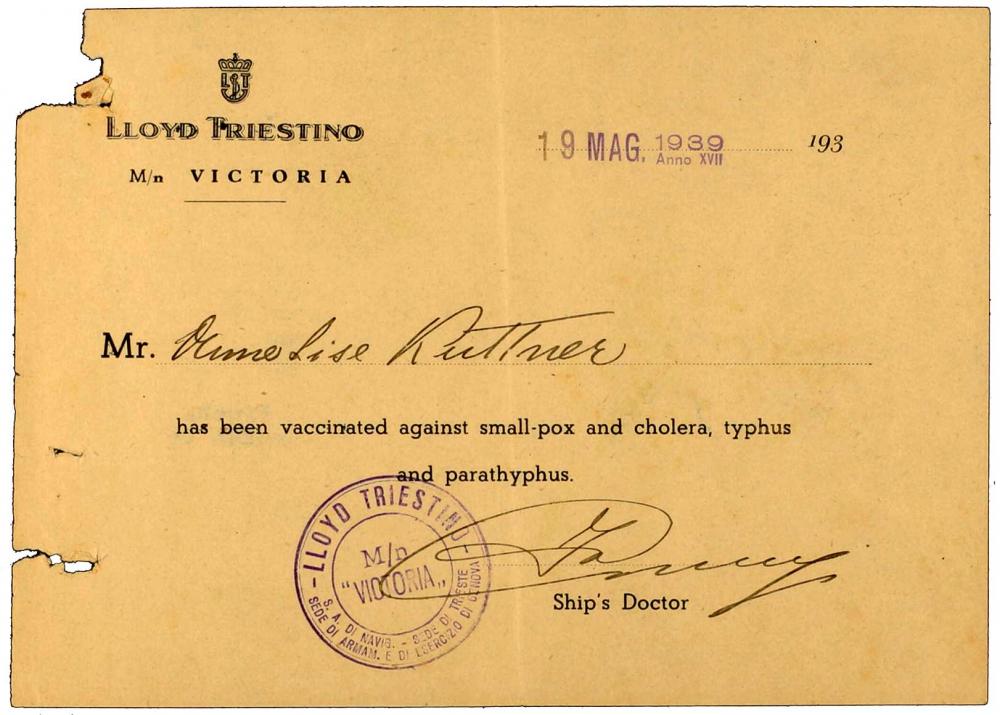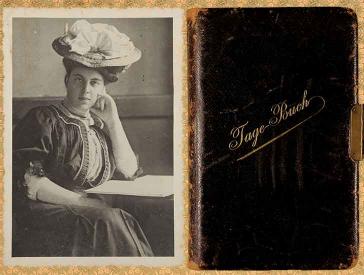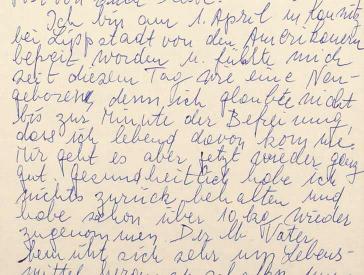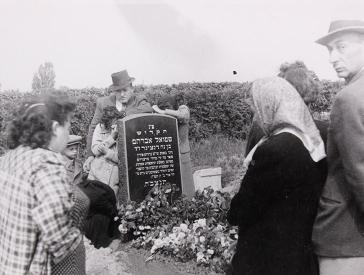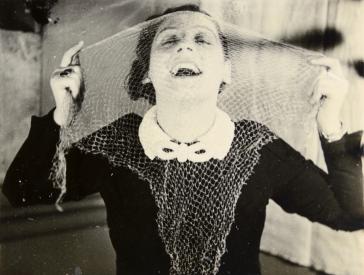
From Cowpox to Covid-19
Nearly 200 Years of Vaccine Certificates in Our Archive
When the Bubonic Plague was raging across Europe, in the mid-fourteenth century, people tried to protect themselves by covering their faces with cloth or using fragrant herbs and rosewater. There were no effective treatments, although people hoped that bloodletting and emetics would expel the pathogens from the body. During the epidemic, the sick were isolated, their houses were marked, or they were banished to lodging's outside the cities. A third of the European population died of the plague.
But the illness was not the only thing spreading: so were conspiracy theories. Jews received most of the blame for causing the “Black Death.” In many cases, accusations of poisoning wells lead to murderous pogroms.
For a year now, our lives have been dictated by Covid-19, a highly contagious infectious disease that spread around the globe within several months and has claimed more than 5.5 million lives to date (January 2022). Meanwhile, some vaccine sceptics and Covid deniers in Germany have been styling themselves as victims, imagining themselves as Anne Frank, or donning a yellow Star of David with the inscription “unvaccinated.”
For us archivists, the development and production of vaccines and their administration since December 2020 recalled a type of document that has been preserved in many of our family collections and has suddenly gained strong contemporary relevance: vaccine certificates.

Rafaello Busoni, Pestilance. From the series of prints: Die 10 Plagen (The Ten Plagues), Berlin: Hans Striem Verlag, about 1925–1928; Jewish Museum Berlin, accession GDR 93/1/6, photo: Jens Ziehe, © Mario Busoni. You can find more information on this object in our online collections (in German).
 X
X
Rafaello Busoni, Pestilance. From the series of prints: Die 10 Plagen (The Ten Plagues), Berlin: Hans Striem Verlag, about 1925–1928; Jewish Museum Berlin, accession GDR 93/1/6, photo: Jens Ziehe, © Mario Busoni. You can find more information on this object in our online collections (in German).
The History of Vaccine Development
The development of vaccination methods and effective vaccines, as we know them today, began in the late eighteenth century with an inoculation for smallpox, which was a widespread disease at the time. With the further advancements of medical history, the discovery of bacteria and viruses as pathogens paved the way to the production of other vaccines against such maladies as cholera, diphtheria, measles, rabies, and typhus.
There are numerous different infectious diseases, and new pathogens have emerged in the past on many occasions. Science has not been able to find effective medicines for inoculating against or treating all of them. From 1918 to 1920, around 500 million people worldwide were infected with the “Spanish Flu” in a pandemic with several waves; between 50 and 100 million of those infected are estimated to have died of it. There was no vaccine against the illness. AIDS was first discovered in the 1980s, and research into a vaccine against HIV infection is still ongoing today.
Jewish Stances on Vaccination
Judaism has always been very receptive to vaccination against infectious diseases because Jewish law requires protecting life for oneself and others. More than a century ago, the US doctor and anthropologist Maurice Fishberg (1872–1934), who was Jewish, remarked in the Zeitschrift für Demographie und Statistik der Juden (Journal of Jewish Demography and Statistics):
“In fact, every physician who possesses experience with Jews knows well that they are always amenable to employing any new method to prevent or treat disease. There are virtually no vaccine opponents among them, nor any other kind of superstition that could induce them to resist the health authorities’ vaccination efforts. Furthermore, the Jewish clergy is always in favor of leaving medical matters up to physicians.” (“Die angebliche Rassen-Immunität der Juden” [The Supposed Racial Immunity of the Jews], 1908)
Obviously, there are Jews who refrain from getting vaccinated, but staunch opposition to the overall practice has always been an outlier.
The Historical Significance of Vaccine Certificates
The preservation of so many vaccine certificates for so many decades attests to how important these documents were when they were created, not least because the German Empire made vaccinations against smallpox obligatory. This legal obligation was introduced in 1874 and not rescinded in West Germany until 1976. In East Germany, the vaccine requirement remained in force until the German Democratic Republic dissolved and its territory joined the Federal Republic of Germany (formerly West Germany) in 1990.
By assiduously safeguarding vaccine certificates, a person could provide proof of having satisfied the legal obligation. These documents were frequently required to enroll in elementary school. A registry of pupils at the Jewish School of Emden, which was maintained from 1890 to 1940, includes a meticulous record of each pupil’s vaccination date.
But these records could also be vitally important when emigrating, especially during the Nazi era. In many cases, proof of vaccination was a requirement to receive an entry visa. Thus, a vaccine and the associated vaccine certificate could be life-saving in more ways than one.
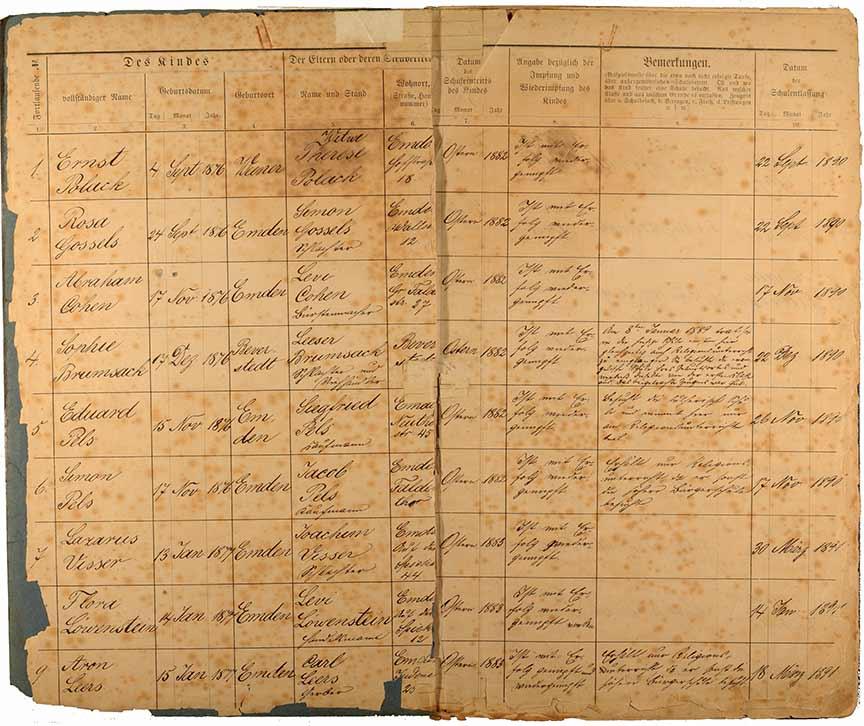 X
X
Registry of pupils at the Jewish School of Emden, 1890–1940; Jewish Museum Berlin, accession 2015/262/1, gift of the Leufgen family
The Reich Vaccine Law of 1874
On 8 April 1874, the German Empire introduced mandatory vaccinations with the Reich Vaccine law. This was during the aftermath of the major smallpox epidemics of 1870 and 1873. From then on, the smallpox immunization was obligatory for children “before the completion of the calendar year following the year of birth” and another booster vaccination was required at age eleven. If they failed to comply, the parents or guardians faced a fine or even imprisonment. The vaccine was free of charge.
Our Archive preserves vaccine certificates for these smallpox immunizations from the entire territory of the German Empire. The forms are mostly similar, but varied somewhat by region and time period. The form for the first infant vaccination was typically red, whereas the one for the booster shot was green. Usually the documents list the vaccinated person’s name and date of birth, the date of the vaccination, and the name of the physician administering the vaccine.

Dozens – in fact, hundreds – of vaccine certificates from the German Empire, the Weimar Republic, and the Nazi era have been preserved in family collections. Since 1874, there have usually been two surviving vaccine records per person. For Ruth Grabowski (1907–1981) from Berlin, we even have five – because according to the forms, she was vaccinated “unsuccessfully” three times and the vaccination had to be repeated the following year; Jewish Museum Berlin; accession 2013/178/30-34, gift of Ekkehard Rentrop. View the individual vaccine certificates in our online collections (in German)
The Oldest Vaccine Certificates
The very oldest vaccine certificates in our archive were drawn up long before vaccines became obligatory. In 1844, Salomon Pollak, who was born in Proßnitz in Mähren (now Prostějov, Czechia), was issued a “cowpox vaccination certificate.”

Cowpox vaccination certificate for Salomon Pollak; Jewish Museum Berlin, accession 2001/211/6
“Cowpox” does not only afflict cattle, as the name suggests. It can also infect other mammals and even humans. However, it does not pose much of a threat to human health. The British doctor Edward Jenner (1749–1823) discovered that injecting cowpox viruses into humans immunized them against smallpox viruses, which are lethal.
He applied this method for the first time in 1796 and called it “vaccination,” derived from the Latin word “vacca,” meaning cow. This technique quickly spread across the territories of the Habsburg Monarchy, and it also became a cornerstone for an extensive campaign against smallpox in other countries. Thanks to this vaccination, the disease has now been globally eradicated.
Salomon Pollak had received the vaccine on 30 July 1818, but when he later became a medical student, he evidently needed the certificate in connection with his practice as a physician. According to the document, he “survived” the “genuine cowpox” – to which he had been exposed in order to confer immunity against smallpox – “reasonably well.” As hypodermic syringes would not become commonplace for another thirty tears, in 1818, an incision was made in Pollak’s skin and the vaccine was introduced directly in the open wound.
Jewish Physicians Who Administered Vaccines
A large share of the vaccine certificates in our Archive were issued by Jewish physicians. They therefore not only include information about the vaccinated individuals who included them in their bequests, but they also give clues to the physicians’ own careers.
Apart from these certificates, family collections also contain other documents from the doctors administering these vaccines. These can be found among all the papers from the professional training and careers of the Jewish physicians whose lives are documented in the Archive.
Lecture Certificate and Thank-You Note

For example, the medical student Arthur Lewkowitz (1890–1966), who was enrolled at Heidelberg University, received a certificate in the summer semester of 1913 affirming that he had attended “the lecture on vaccination and immunization,” observed initial and second vaccinations and practiced “vaccination techniques”; Jewish Museum Berlin, accession 2004/292/24, gift of Eva Karpas

Portrait of Max Kirschner (1886–1975) from 1926; Jewish Museum Berlin, accession 2011/253/714, gift of Judith, David, Jonathan, and Thomas Kirschner

Max Kirschner (1886–1975), who worked as practicing physician in Frankfurt am Main beginning after the First World War and also administrated vaccines for the district, was relieved of this duty in 1931. The police commissioner thanked him for his “activities to date in the public interest”; Jewish Museum Berlin, accession 2011/235/656, gift of Judith, David, Jonathan, and Thomas Kirschner
Transcription:
The Police Commissioner in Frankfurt a[m] M[ain]
Frankfurt a[m] M[ain] Platz der Republik 11To Mr.
Dr. med. [equivalent of MD] Max Kirschner
Here
Heddernheimerlandstr. 79File number and date of my letter
- VI.5 – 5 March 1931.Regarding
Under an order by the district president [Regierungspräsident] in Wiesbaden dated 24 Jan 1931 – Pr.I.7.M. no. 1910 III/30 – I have been commissioned to reexamine the number of vaccinating doctors and to reduce this [number] to the level absolutely necessary.Accordingly, I have entrusted the Medical Councilor Dr. Glaz with administering public vaccination appointments etc. in the vaccination district of Ffm-Heddernheim, and thus relieve you from the duty as a district vaccinating physician and would like to express to you my most obliging gratitude for your activities to date in the public interest.
[Signed] As authorized [by my superiors]
[Signature]
During the First World War
The pay books of German-Jewish soldiers who fought in the First World War also contain frequent references to vaccinations. In massive armies, infectious diseases quickly spread among the soldiers – notwithstanding the establishment of quarantine stations, epidemic hospitals, and disinfection stations.

For example, in 1917–18, the musketeer Daniel Siesel (1897–1978) from Glauberg in Hesse was vaccinated against “smallpox,” “typhus,” and “cholera”; Jewish Museum Berlin, accession 2013/23/23, gift of Susana Mayer

For example, the soldier Julius Weinberg died of “spotted fever” – typhus – at a military hospital in Damascus. He was only thirty-three. Our archive includes a telegram sent to his widow informing her of his death. You can also find it in our online feature 12 of 12,000.
Emigration Papers
Emigrating to another country usually required a vaccine certificate among many other documents. The Handbook for Jewish Emigration, published in 1938 by Philo Verlag, devotes three separate entries to different synonyms of the German word for vaccine. The entry for “Schutzimpfung” (protective vaccine) reads:
“Smallpox v[accine] is required for most destination countries. Cholera & typhus v[accine] is advisable for [those intending to] live in or transit through endemic areas.”

Portion of the immigration certificate for Palestine pertaining to the vaccine; Jewish Museum Berlin, accession 2004/61/5, gift of I. Dina Haller
Section from the certificate (transcription and translation)
קרנטינה
1)
כל עולה מקבל זריקות נגד טיפוס ונגד אבעבועות (מזריקה נגד אבעבועות פטורים אם יש תעודה המוכיחה שהרכיבו לעולה אבעבעות בחו"ל בתוך 3 השנים האחרונות ושהזריקה נקלטה אז).**)
2)
אם עפ"י פקודת הרופא הממשלתי בחוף א"י נערכת קרנטינה לעולים, שבאו באותה האניה – צריכים העולים להוציא לפני כניסתם לקרנטינה את החפצים הנחוצים ביותר (לבנים יכו') מפני שאת יתר החפצים יוכלו לקבל רק למחרת או אחרי צאתם מהקרנטינה.
Quarantine
1) Every immigrant shall receive injections against typhus and smallpox (an exemption to the smallpox injection is granted upon presentation of a certificate indicating that the immigrant has been vaccinated against smallpox abroad within the past 3 years and the injection was effective). **)
2) If, on the orders of the medical officer, a quarantine is instituted at the coast of Eretz Israel for immigrants who arrived on the same ship, the immigrants must take out the most important items (linens, etc.) before they enter quarantine as the remaining items can only be received on the following day or after the quarantine period.
The immigration certificates for Palestine even indicates that all immigrants received vaccines against typhus and smallpox upon arrival in the territory of the British Mandate. If the immigrant presented a vaccine certificate issued during the preceding three years, this obligatory vaccination was waived. This was the case for Heinz Katz (1902–1969), who had been vaccinated against both diseases in Darmstadt on 18 July 1935, as attested by two official letters from district physicians. Shortly thereafter, he and his wife emigrated to Palestine.
Vaccinations for Emigration

Immigration Certificate from the Jewish Agency for Palestine for Max (1892–1960) and Katarina Haller (1899–1994); Jewish Museum Berlin, accession 2004/61/5, gift of I. Dinah Haller

Certificate of typhus vaccination for Chaim (Heinrich) Hirsch Katz (1902–1969); Jewish Museum Berlin, accession 2009/279/119, gift of Sally and Chaim Katz

Portrait of Sally (1907–2006) and Heinrich Katz (1902–1969), Palestine, 1937; Jewish Museum Berlin, accession 2009/279/488, gift of Sally and Chaim Katz

Certificate of smallpox vaccination for Chaim (Heinrich) Hirsch Katz (1902–1969); Jewish Museum Berlin, accession 2009/279/120, gift of Sally and Chaim Katz

Certificate of smallpox vaccination for Edith Adler; Jewish Museum Berlin, accession 2013/16/43, gift of Viola Bikerman and Harriet Thomsen

Certificate of typhus vaccination for Edith Adler; Jewish Museum Berlin, accession 2013/16/45, gift of Viola Bikerman and Harriet Thomsen
Edith Adler (1913–?), who planned to emigrate with her husband to Argentina, obtained confirmation from the Frankfurt am Main health authority that she
“[...] does not suffer from any infectious disease, nor from mental illness, leprosy, elephantiasis, cancer, tuberculosis; is not blind or mute, nor does she show any signs of a paralysis that would impede her from working.”
On 22 December 1938, she was “vaccinated against smallpox.” After being “vaccinated against typhus” as well in March 1939 at the hospital of the Israelite Community of Frankfurt, she emigrated to Bolivia via France. In La Paz, the twenty-six-year old was vaccinated once more against “viruela” (smallpox) in October 1939.

Passport photo from the character reference for Edith Adler (1913–?); Jewish Museum Berlin, accession 2013/16/37, gift of Viola Bikerman and Harriet Thomsen. View the complete document in our online collections
 X
X
Passport photo from the character reference for Edith Adler (1913–?); Jewish Museum Berlin, accession 2013/16/37, gift of Viola Bikerman and Harriet Thomsen. View the complete document in our online collections
In Shanghai
Our Archive includes a disproportionate number of vaccine documents from exile in Shanghai, many more than from other countries of exile. This may be related to the fact that almost all the people who took refuge there moved onwards to other countries after the end of the Second World War; a small number of them even returned to Germany.

Rudolf Jorysz (1906-1998) receiving a vaccine at the hospital of the American Jewish Joint Distribution Committee in Shanghai; Jewish Museum Berlin; accession 2014/265/19, gift of Hans Richard Jorysz
Those vaccine certificates, all of them issued after the war’s end, were therefore preserved among their emigration papers and were accorded particular importance. Documents from Shanghai demonstrate particularly clearly that these documents were sometimes used as official identity papers. Many of them were affixed with passport photographs and signed by the vaccine recipient.

Abraham Meyer (1881–1950) and his wife Cilly (1889–1978) fled from Hamburg to Shanghai, where they were forced to live in a ghetto established by the Japanese occupiers until the war ended. They were vaccinated against cholera and typhus on 1 October 1947. In January 1948, they were finally able to emigrate from Shanghai to the US; Jewish Museum Berlin; accession 2011/242/29+50, gift of Trude Meyer
Vaccinated Soldiers
We have far fewer documents from German-Jewish soldiers who fought in Allied forces against Nazi Germany during the Second World War than from military service in the First World War. However, an “Immunization Register” has survived from Rudolf Mariam (1912–2002), who emigrated to the US in 1938. As a serviceman in the US Army, he was certified to have been vaccinated against “smallpox,” “triple typhoid,” “tetanus,” and “yellow fever.”
A military identity card dating from 1958 belonged to the Berlin-born Willi Löhr (b. 1937) whose mother had been murdered at Auschwitz. In the mid-1950s, he had emigrated to Israel, where he served in the army. His identity card lists his blood type alongside various vaccinations.
Military Vaccine Certificates

Vaccine certificate for Rudolf Mariam (1912–2002); Jewish Museum Berlin, accession 2017/166/444, gift of Thomas Mariam. Transcription:
Immunization Register
Last Name: Mariam / First Name Rudolf / ASN 32091969
Grade Company Regt 37 A.R.HQ 3rd BN. / Age / Race
Smallpox Vaccine
Date – Type of Reaction – Med 0
5/17/41 Vaccinoid
3/4/42 Immune
5-27-43 Immune
3-11-44 Immune
Triple Typhoid Vaccine
Dates of Administration (Series – 1st Dose – 2 Dose – 3 Dose) – Med 0
[different dates between 1941 and 1945]
Tetanus Toxoid
Initial Vaccination Stim Doses
Date – Med Officer – Date – Med Officer
[different dates in 1941]
Yellow Fever Vaccine
Date – Lot No. – Amount – Med Officer
10-20-42 368 0:5cc
Other Vaccines
Disease – Date – Type of Vacc – Med Off
Typhus 12-9-44 5-3-45
Typhus 12/16/42 12/21/43 12/26/43
[handwritten:] Blood type A – 8/29/41

Front of identity card from the Israeli army for Willi Löhr (b. 1937); Jewish Museum Berlin, accession 2007/52/6, gift of Willi Löhr. Transcription:
Armée de défense d’Israel
Carte d’identité
(Art. 17, Convention de Genéve, relative au traitement des prisonniers de guerre, du 12 Août 1949).Numéro Matricule 349782 מספר אישי
Nom Loeier שם משפחה לוהר
Prénom Vili שם פרטי וילי
Date de Naissance 1937 תאריך לידה
Signature חתימת החייל

Identity card bearing vaccine records from the Israeli army for Willi Löhr (b. 1937); Jewish Museum Berlin, accession 2007/52/6, gift of Willi Löhr
Vaccine Certificates as Records of Broader History
Vaccine certificates constitute more than important historical records of medical history. They can also provide personal biographical information. For example, the certificate from the twelve-year-old Berliner Jonni Teicher’s (1924–2017) booster vaccination on 19 May 1936 lists his vaccination district as the “private elementary school of the Jewish community.” This is the only surviving indication that he attended that school.
Vaccine papers from the Nazi period frequently attest to the discrimination and persecution to which Jews were subjected. When the Gumpert family from Breslau (now Wrocław, Poland) received their vaccinations against smallpox in their hometown before their planned emigration on 2 February 1939, not only did their certificates include the government-imposed second names of “Israel” and “Sara,” they also bore a stamp indicating that the Jewish physician “Dr. Israel Martin Biberstein” was “authorized to treat Jewish patients exclusively.” The stamp includes a Star of David.
Vaccine Certificates as Records of School Attendance and Discrimination during the Nazi Era

Vaccine certificate for Jonni Teicher (1924–2017); Jewish Museum Berlin, accession 2010/239/23, gift of Fred Antman.
Transcription:
I.
Vaccine certificate.
(Re-vaccination.)
Vaccine list no. 93
Vaccine district Private Elementary School of the Jew.[ish] Community
Jonni Teicher
born on 8 Dec 1924, on 19 May 1936 was re-vaccinated on the first occasion with success.
The vaccination satisfies the legal obligation.
Berlin, 26 May 1936
[stamp of Prenzlauer Berg Health Authority] [signature of vaccinating physician]
Note:
When they are drawn up, the printed forms shall be marked by the corresponding physician with his signature and his capacity as “physician” or “vaccinating physician.”

Vaccine certificate for Martin Gumpert (1890–1968); Jewish Museum Berlin, accession 2019/15/48, gift of Franklin Gumpert and Evelyn Jane Mabee née Gumpert

Vaccine certificate for Aenni Gumpert (1897–1986); Jewish Museum Berlin, accession 2019/15/101, gift of Franklin Gumpert and Evelyn Jane Mabee née Gumpert

Vaccine certificate for Hans Joachim Gumpert (1922–2008); Jewish Museum Berlin, accession 2019/15/127, gift of Franklin Gumpert and Evelyn Jane Mabee née Gumpert

Back of the vaccine certificate for Hans Joachim Gumpert; Jewish Museum Berlin, accession 2019/15/127, gift of Franklin Gumpert and Evelyn Jane Mabee née Gumpert
Transcription:
In each vaccination district, vaccinations are administered annually at times and locations that are announced in advance. Children’s first vaccination must take place before the end of the year following the year of birth; the later vaccination (re-vaccination) for pupils of a public school or a private school, excepting Sunday and evening schools, must take place during the calendar year in which the children complete their twelfth year of life [i.e. reach the age of twelve]. If the doctor deems the vaccination unsuccessful, it must be repeated within the following year at the latest. Each vaccinated subject must be presented to the physician for inspeciton on the 6th day at the earliest and the 8th at the latest after the vaccination. Parents, foster parents, and guardians whose children or wards have been deprived of a vaccination without legal grounds and despite an official summons face a fine or imprisonment.
Note:
The green form is used for all re-vaccinations (section 1 (2) of the Vaccination Law) that have satisfied the legal obligation.Furthermore, [the following] distinctions shall be made:
1. If the vaccination was successful on the first or second occasion, then the word “first” or “second” shall be inserted [in the blank] between the words “on the ... occasion,” , and the word “with” shall be inserted between the words “occasion ... success”;
2. If the vaccination has been repeated on a third occasion (Section 3 of the Vaccination Law), then the word “third” should be inserted [in the blank] between the words “on the ... occasion” and the word “with” or “without” between the words “occasion ... success” depending on whether or not the vaccination was successful.
Medical Care in the Ghetto
Vaccine certificates issued at the Theresienstadt ghetto are unique in our Archive. Along with the person’s name, these “vaccine cards” list the number of the “transport” within which the person was deported there.

Vienna-born Berta Richter (1875–1959) was deported from Troppau (today Opava, Czechia) in January 1944 as part of “transport” no. XXI/3 and was vaccinated against typhoid fever in January and February 1944; Jewish Museum Berlin; accession 2008/167/1, gift of Giselher Technau
In fact, it would have suited the regime’s intentions if infectious diseases were to run rampant in Theresienstadt, as they did in other ghettos and camps, claiming the lives of many prisoners. However, the Theresienstadt ghetto served for a while as a “show” camp to mislead the international public and visiting delegations from the Red Cross. In that context, vaccines were administered there as well. Berta Richter survived her detainment and died in 1959 at the age of eighty-five.
 X
X
With Facades for the International Commission Bedřich Fritta documented the Theresienstadt ghetto, 1943/44; Jewish Museum Berlin; accession L-2003/3/160, long-term loan from Thomas Fritta-Haas, photo: Jens Ziehe
Covid-19 Today
And today? Covid-19 is also an intrusion on Jews’ lives and religious practices. During the first lockdown, prayer services had to be temporarily suspended. In addition, the public health rules raise many questions. For example, is it permissible to touch a mezuzah in an entryway and then kiss one’s hand? Today, German and European rabbis are appealing for people to get vaccinated against Covid-19. And the chair of the Central Council of Jews in Germany, Dr. Josef Schuster, has spoken out in favor of the vaccination.
Because the Jewish Museum Berlin’s Archive preserves not only documents from the past, but also from contemporary Jewish life, it is quite possible that at some point, we will have a record of a Covid-19 vaccination in our holdings.
By the Archive staff members, who are looking forward to their own vaccinations
Citation recommendation:
The JMB Archive staff members (2021/22), From Cowpox to Covid-19. Nearly 200 Years of Vaccine Certificates in Our Archive.
URL: www.jmberlin.de/en/node/7775
Behind the Scenes: Anecdotes and Exciting Finds while Working with our Collections (22)



 X
X



























